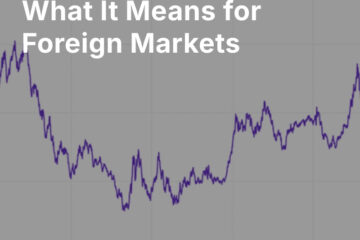Market Summary
The U.S. Market and Economy
As we have been mentioning frequently in these pages, we continue to have a bullish view of the U.S. economy. More positive economic data surface each week. This week we learned that small business optimism in the U.S. is at the highest level that it has ever reached in its 45-year history. We also discovered that there are 650,000 more jobs available in the U.S. than the total number of job seekers. We learned that this gap has been growing each week for several months.
Our basic view has always been that:
(1) Stocks follow corporate profits. Today corporate profits are growing at almost 24% due to lower taxes, rapid growth in capital investment, and the hiring of new personnel.
(2) Corporate profits follow economic activity; currently, economic activity is at a multi-year high. Contrary to a well-publicized establishment view that the U.S. is locked in a 1.5–2% growth rate, the recent U.S. GDP growth rate has been 4.2%, and U.S. growth will probably exceed 3% in 2018 and early 2019.
(3) Economic activity is a function of the availability of capital and incentives to growth. Incentives to growth are the best they have been in the U.S. for many years. Capital is available and plentiful now that banks have been restructured and small banks have had regulatory restrictions removed. Lower taxes, removal of regulatory overreach, and the publicity that successful high-tech startup businesses have received have inspired many to start new businesses and expand existing ones. In short, people respond to incentives, and seeing others become successful is a psychological incentive.
(4) Capital availability drives business growth, and low inflation allows business to borrow at low rates to expand. Inflation is still low and signs on the horizon are for slightly higher but not extreme inflation. This argues for further U.S. economic growth.
We remain bullish on U.S. stocks, and believe that disruptive technology, cloud services, cybersecurity, specialty retailing, biotechnology, financial technology, travel, and entertainment are attractive sectors for investment.
Europe
Europe is just the opposite of the U.S.; currently it is doing poorly. Why?
(1) The banking system has not been restructured. It has bad debts and limited lending capacity to provide capital that could be the engine of business growth for Europe.
(2) Regulations which have been moderated in the U.S., making it possible to expand and grow into new areas, have been tightened in Europe, and are raising businesses’ costs of operation.
We are avoiding Europe. Within Europe, eastern Europe and Switzerland are doing best, because they are incentivizing business expansion.
Emerging Markets
Emerging markets are not as poorly managed as Europe, and some of them have the potential to do well once the U.S. dollar rally ends and the dollar begins to move sideways or down. It is not time yet, but when the time arrives, we will be buying Thailand, India, and perhaps some others, including China.
Gold
Gold continues in a sideways pattern. We still are being told by technicians that a close below $1,185 will then see gold decline below $1,000. We have long supported gold, and we continue to believe that it is an excellent store of value for long term preservation of capital. Cryptocurrencies may be seen more favorably by a younger demographic, and currency problems in some countries mean that some central banks are sellers of gold. However, a sideways or weaker dollar will be constructive for gold, and we note that the Bloomberg Commodity Index may be close to bottoming.
Cryptocurrencies
Gemini, a New York-based crypto exchange which has pursued high standards of regulatory compliance, introduced an ERC-20 stablecoin — that is, a one-to-one U.S. dollar-backed digital currency employing the Ethereum platform. Gemini’s offering is made with the approval of the New York Department of Financial Services. The option of a legitimate, regulated, fiat-backed digital currency could ultimately have a profound impact on the entire crypto ecosystem, and as it is adopted by other exchanges, could provide rapid and inexpensive ways for consumers to conduct cross-border transactions without exposing themselves to radical fluctuations in the value of their holdings.
Thanks for listening; we welcome your calls and questions.
Wealth Builder Dividend Portfolio Management
In January 2016, some of our clients who are retirees asked us if Guild could offer accounts that would hold income-producing securities, and yet would not suffer like bonds as interest rates rose in 2016 and beyond. (Guild had recently notified clients to expect several years of interest-rate increases and bond-price depreciation.)
Guild selected 15 to 20 dividend-paying common and preferred stocks that we believed could be used to create income for clients during a period of rising interest rates. We picked stocks which paid dividends well in excess of the return on 10- and 20-year U.S. Treasury bonds, and which we believed would increase their dividends in a rising interest-rate environment. Except in the case of a major global calamity, we anticipated very low portfolio turnover, thus minimizing taxation risk.
The results have been good and while losses with stocks are always possible, we anticipate that results will continue to be good in the rising interest rate environment that we see ahead. For further information, please contact Aubrey Ford (aford@guildinvestment.com) at Guild Investment Management.



